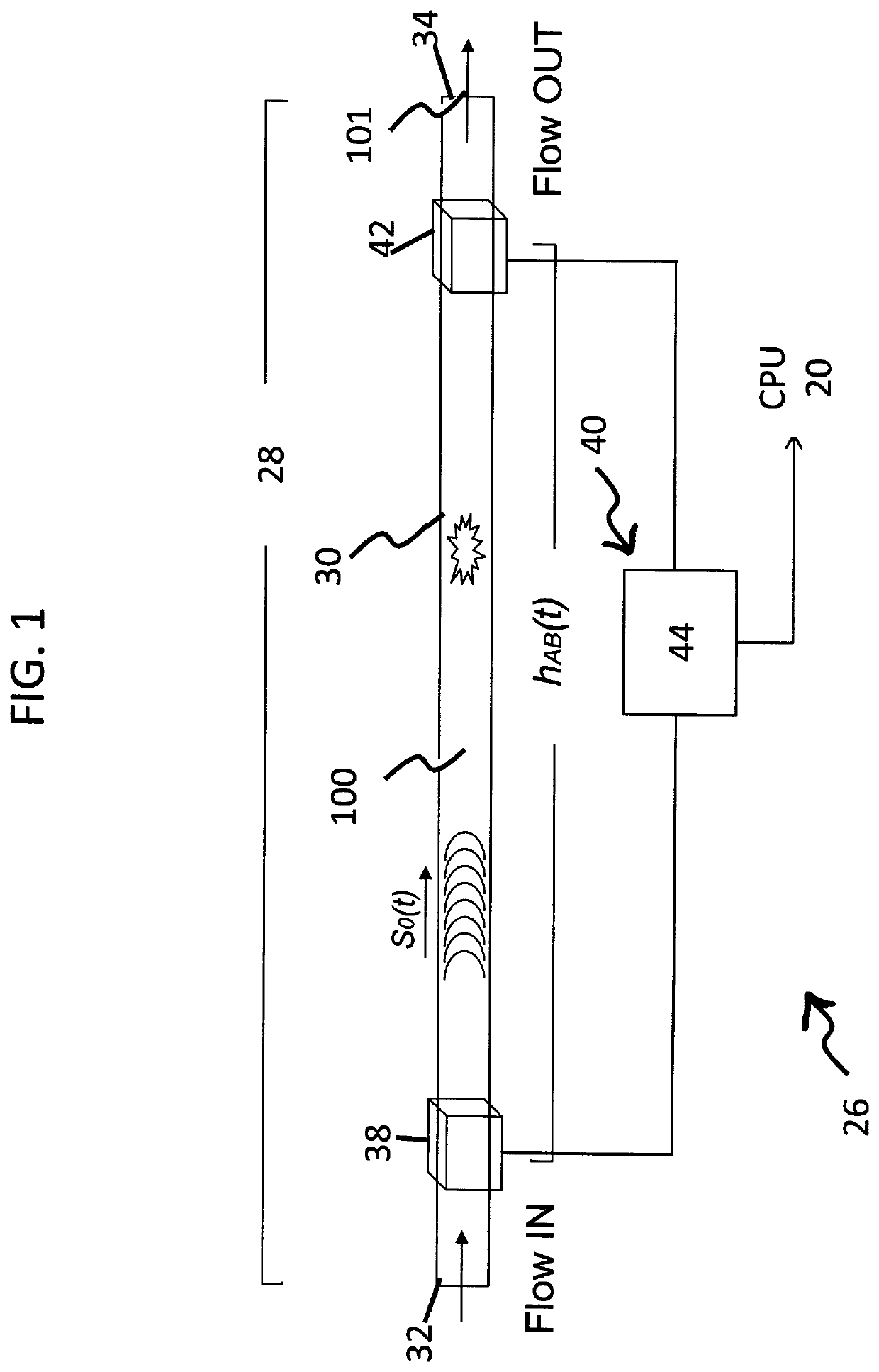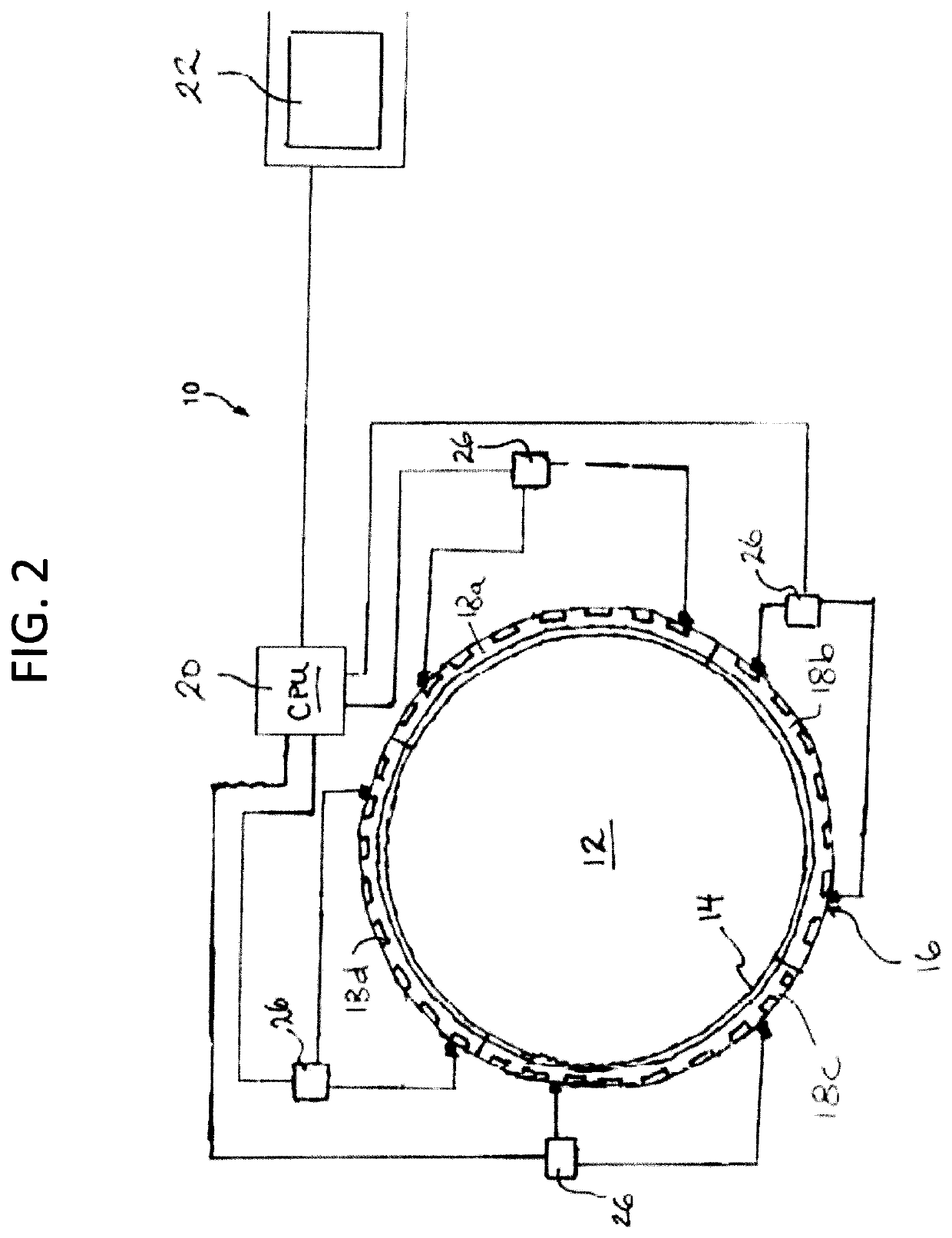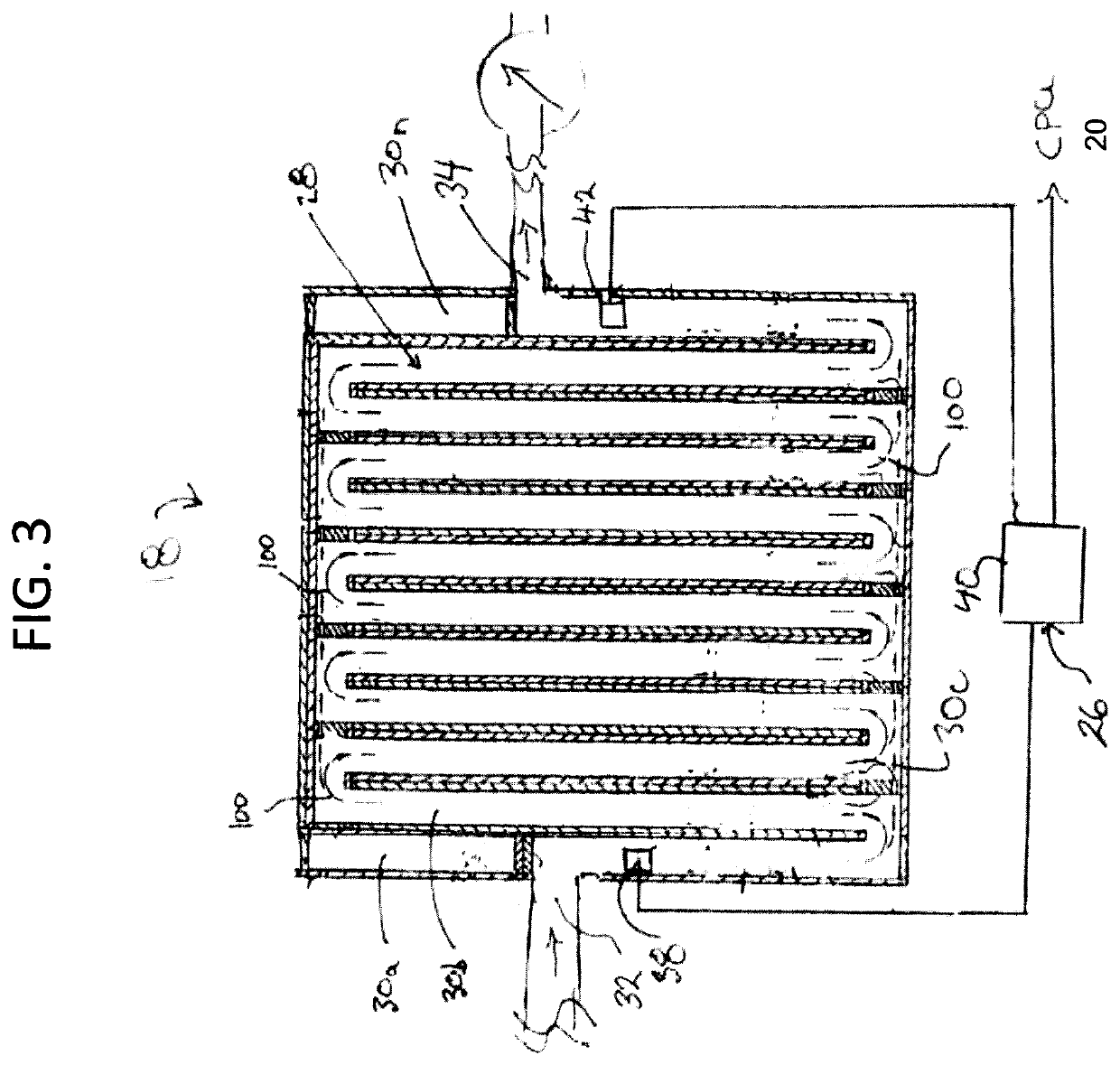Method and apparatus for acoustically detecting fluid leaks
a technology of acoustic detection and fluid leakage, applied in lighting and heating apparatus, instruments, furnaces, etc., can solve the problems of affecting the detection effect, so as to achieve fast and reliable detection
- Summary
- Abstract
- Description
- Claims
- Application Information
AI Technical Summary
Benefits of technology
Problems solved by technology
Method used
Image
Examples
Embodiment Construction
[0075]The description below describes the methodology for the acoustic leak-detection system design in the preferred embodiment. It is understood that a similar methodology is applicable for design of acoustic leak-detection systems for other embodiments.
[0076]Reference may be had to FIG. 1, in which a leak detection system 26 is shown, as respectively including an acoustic signal emitter 38 and an acoustic signal receiver assembly 40 which includes at least one acoustic receiver or detector 42. The acoustic detector 42 and emitter 38 are preferably spaced along a conduit 28. Although not essential, the detection system 26 preferably includes a sensor system processor 44. In a non-limiting aspect the sensor processor 44 may be provided as part of the acoustic signal receiver assembly 40, and which preferably electronically communicates with and controls both the acoustic signal emitter 38 and the acoustic signal detector 42. More preferably, the sensor system processor 44 is further...
PUM
| Property | Measurement | Unit |
|---|---|---|
| frequency | aaaaa | aaaaa |
| frequency | aaaaa | aaaaa |
| frequency | aaaaa | aaaaa |
Abstract
Description
Claims
Application Information
 Login to View More
Login to View More - R&D
- Intellectual Property
- Life Sciences
- Materials
- Tech Scout
- Unparalleled Data Quality
- Higher Quality Content
- 60% Fewer Hallucinations
Browse by: Latest US Patents, China's latest patents, Technical Efficacy Thesaurus, Application Domain, Technology Topic, Popular Technical Reports.
© 2025 PatSnap. All rights reserved.Legal|Privacy policy|Modern Slavery Act Transparency Statement|Sitemap|About US| Contact US: help@patsnap.com



